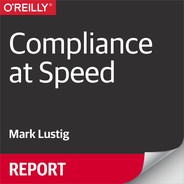Book Description
It’s tough enough to meet performance goals with a complex system of web servers, application servers, and multiple middleware, but it’s much harder when you also have to meet regulatory requirements. In this O’Reilly report, Mark Lustig breaks down the IT issues facing finance, healthcare, and other heavily regulated industries, and then outlines a disciplined process to achieve performance goals in the face of compliance issues.
Lustig discusses common performance challenges, including the difficulty of setting appropriate service level agreements (SLA), and includes real-world case studies of four companies that followed the process outlined in the report. With Lustig’s process, you’ll learn strategies to help you:
- Define performance goals based on non-functional requirements
- Identify both business and regulatory constraints
- Design and develop systems in line with performance goals
- Define a plan for measuring and monitoring end-to-end performance
- Implement controls and measures that target potential performance problems
- Minimize and resolve risks through specific solutions and recommendations
